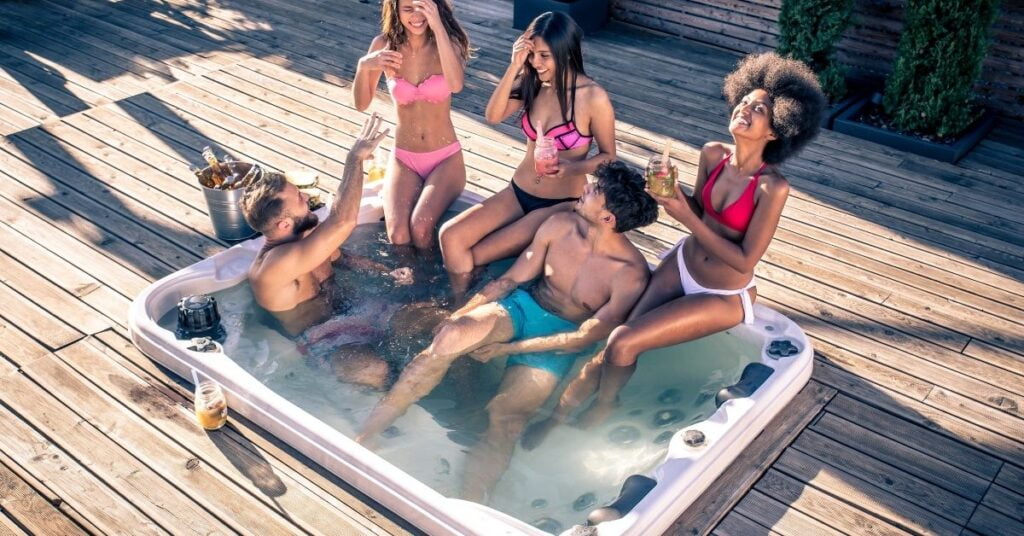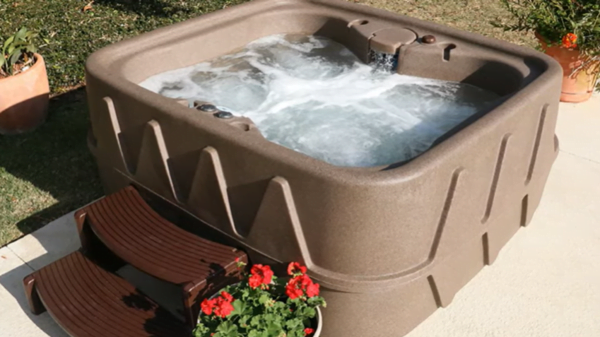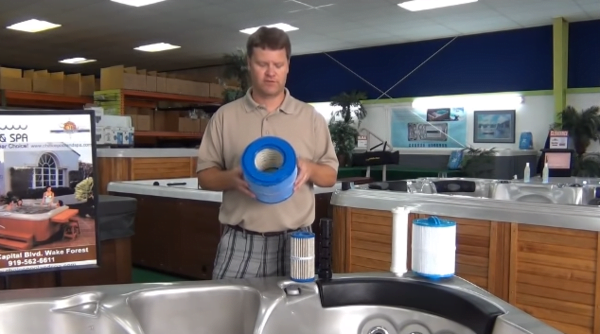This article shares our favorite hot tub water treatment tips that will help you enjoy a safe, clean and healthy hot tub.
If you're thinking of buying a hot tub, you've probably heard that you need to treat the water in your hot tub. There are several ways to treat your hot tub water, but chemical treatments, heat treatments, and filtration systems are the most common methods. This guide will help you understand how these hot tub water treatment methods work and which is best for your hot tub.
Why You Need to Treat Your Hot Tub
It is important to know how to care for hot tub water. If left unattended, hot tub water can become unsanitary and cause noticeable scale on the hot tub shell. Keeping the hot tub cleaner than average and keeping the temperature consistent are some things that should be done to maintain the hot tub water.
Hot tub maintenance doesn't have to be difficult, but you need to understand each system to keep the water clean. A good understanding of the chemistry of your water before it goes into the spa is as important as the water care option that you choose.

Your local hot tub dealer can provide information about your hot tub's water care and maintenance. If you want to set up a regular schedule for maintenance, they can help. A simple approach to water care is something they can help you plan.
Key Takeaways: Contaminants and bacteria can quickly accumulate in hot tubs if left unchecked. To ensure safe and long use, learning how to treat a hot tub is a must for every hot tub owner.
Types of Treatment Systems Used in Hot Tubs
Some of the best water treatment systems are designed to prevent the buildup of minerals and other contaminants that can cause deposits and scaling and can maintain crystal clear spa water for daily use. These include saltwater chlorine generators, ozone generators, and in-line chlorination.


Depending on the technology, some may require more effort from the owner to support the sanitation process; others are more hands-off. Some hot tubs allow the hot tub water to last much longer before it needs to be changed; others depend on more frequent draining and refills.
- Salt Water Chlorine Generators. With the freshwater salt system, you can be sure that your hot tub water stays clear and healthy. These systems make chlorine automatically from the low levels of salt in your hot tub's water. Some systems can even keep the water in your hot tub fresh and clean for up to a year of normal use! This reliable and largely automatic system allows owners to minimize their time and energy and spend more time relaxing and enjoying the benefits of owning a spa. Adding mineral sanitizer will help prevent bacteria growth and maintain a neutral pH for softer, more balanced water.
- In-line Chlorine Sanitation. This system offers a new way to treat hot tubs by automatically dispensing chlorine and important minerals into the hot tub's water. This removes impurities, maintains a constant residual amount of chlorine, prevents bacterial growth, and eliminates contaminants. The minerals inhibit bacteria growth and soften the feel of the water. These hot tub systems reduce the number of chemicals that are required to keep your spa's water clean. They use up to 75% less chlorine than traditional hot tub treatment methods.
- Ozone Generators. These hot tub treatment systems clean the water constantly, using a combination of ozone and silver ions. Ozone systems use ozone to clean the water, but owners need to add a dose of chlorine to the water once or twice a week. These systems may require less chlorine overall than hot tubs that do not use ozone and may also reduce odors and irritation. Note: they should not be used in combination with saltwater chlorine generators.
- Manual chlorine addition. Most hot tub owners don't have an automatic water care system, so they need to manually add chlorine to the hot tub on a regular basis. This requires frequent testing of the water's pH and calcium levels. With manual chlorine systems, the amount of chlorine needed is much greater than in automatic systems. This is because chlorine dissipates quickly in water, so it needs to be constantly replenished.
Key Takeaways: Newer methods of hot tub treatments are becoming the norm nowadays. They help reduce maintenance time so you can enjoy your hot tub more.
Testing and Balancing Your Hot Tub's Water
It's important to test your water each week using either test strips or liquid test kits. The ultimate goal is to have a balanced pH, usually between 7.2 and 7.8, where the alkalinity and acidity are right. This will create the perfect environment for your hot tub.


A properly balanced hot tub should have an alkalinity of 80 to 120 parts per million. If the alkalinity is too low, using an alkalinity increaser will bring it up to the correct level. On the other hand, if alkalinity is too high, you can use an alkalinity reducer.
Key Takeaways: Keep your testing kits in handy. Most of the time, you're going to do a lot of testing to ensure your hot tub is just within the ideal pH level.
Hot Tub Filtration
Sanitizers and shock treatment kill off small amounts of bacteria; however, larger objects must be filtered out to prevent them from growing and contaminating your hot tub.


To maintain a sparkling hot tub water filtration system, rinse the filter with a garden hose once a month. You should also soak the filter in a cleaning solution for a much deeper clean.
Over time your water filter will lose its ability to clean, and you'll have to buy a new one. Fortunately, they're relatively cheap and easy to find.
3 Cs of Hot Tub Maintenance
Always remember the 3 Cs: circulation, cleanliness, chemicals. These three are the basic rules of hot tub maintenance.
You can circulate your spa's water in two ways: automatic circulation, which is set up automatically, so your water flows once or twice a day, and manual circulation, which lets you turn the pump manually if you need to. If your hot tub doesn't have an automatic cycle, turn it on for 15 to 20 minutes twice a day to ensure your water has passed through the filters.
Always use the filters on your hot tub. The more you use it, the cleaner your water will get. Pro Tip: Add some tennis balls to your hot tub to give it additional cleaning power.
To top it all up, use the right mix of alternative and conventional sanitizers to suit your goals and preferences.
Conclusion
We've compiled a list of our best hot tub water treatment tips to help you enjoy a safe, clean and healthy tub. Make sure to get the right treatment to keep it clean. There are several different types of treatments available for your hot tub, but your choice comes down to your preferences, needs, availability, and budget.
